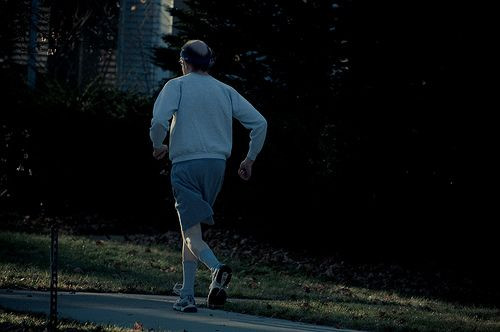What’s Your Fitness Age? Calculator Uses 5 Factors To Determine How Old You Really Are

Thirty is the new 20, they say. But what about 45 as the new 20? Or 20 as the new 55? Such may be the case depending on how the Norwegian University of Science and Technology’s Fitness Calculator scores your “fitness age.”
Patently different from chronological age, fitness age reflects the internal state of your body. Sure, you may have lived for 30 years on Earth, but your body may show the wear and tear of someone 20 years your senior. Fortunately, finding this out doesn’t require complicated measures of lung capacity and mailed-in blood samples. After running tests on nearly 5,000 Norwegians, between the ages of 20 and 90 years, researchers have arrived at five simple measures that can predict fitness age to an astonishing accuracy when compared with tests in the lab.
For their initial tests, the team put subjects through rigorous physical exams. Each participant ran on a treadmill to the point of exhaustion. They had their maximum oxygen intake measured, known as their VO2 max, so the experimenters could assess how well the oxygen they breathed in was transferred to their cells. Prior studies into VO2 max have found the measurement to reliably predict overall fitness age, so the present researchers used it as the foundation for their calculator.
“A 70-year-old man or woman who has the peak oxygen uptake of a 20-year-old has a fitness age of 20,” Dr. Ulrik Wisloff, the study’s senior author and the director of the K. G. Jebsen Center of Exercise in Medicine at the University, told The New York Times.
The long way of arriving at a person’s VO2 max is to do just what the Norwegian researchers did: hook the person up to a treadmill and measure their O2 intake. But most folks don’t have such an apparatus in their living room. So the team drilled down to five essential metrics and built a scenic route to a person’s fitness age: resting heart rate, waistline measurement, sex, exercise level and intensity, and age. Simply enter this data and, voila! The calculator spits out your personal VO2 max, the mean for your age group and the mean for the survey in general, and, of course, your fitness age.
The results may not always be heartening. A 45-year-old man weighing 180 lbs. with a 34-inch waistline and a resting heart rate of 72, actually has the fitness age of a 48-year-old if he only exercises once or twice a week at low- to moderate-intensity. Conversely, a lithe 160-pound 60-year-old who exercises at the same intensity and frequency and has the same heart rate, yet has a 31-inch waist, sports the fitness age of a 52-year-old.
Despite the two men being 15 years apart in chronological age, the 60-year-old likely has many more years ahead of him if both stay on course. Luckily, the good news is that fitness age, unlike chronological age, is reversible. The 45-year-old man, if he starts exercising more and cuts a few inches from his waist, stands to extend his life span considerably.
Such a property should be encouraging, the authors point out. Fitness age is unique in that it’s a choice. People hurtle, inexorably, toward their 50th, 60th, 70th birthdays, but always retain the ability to remain virtually ageless. This, more than anything, Dr. Wisloff explains, is what makes fitness age “the single best predictor of current and future health.”
Source: Nes B, Janszky I, Vatten L. Estimating VO2 peak from a non-exercise prediction model: the HUNT Study, Norway. Medicine & Science in Sports & Exercise. 2013.
Published by Medicaldaily.com



























